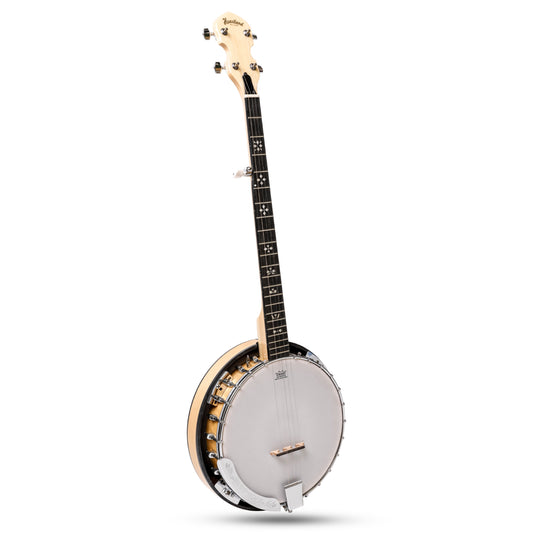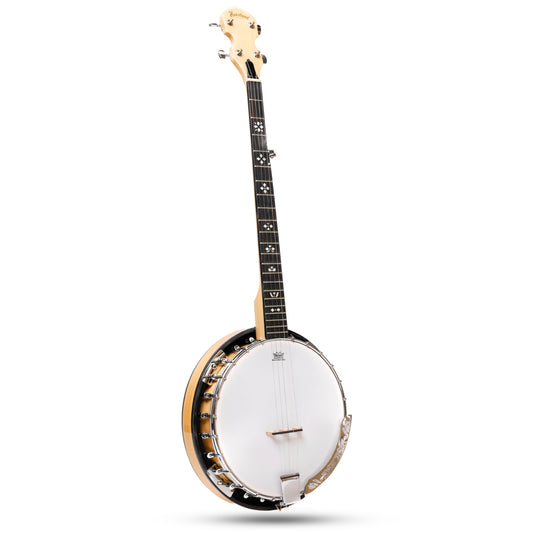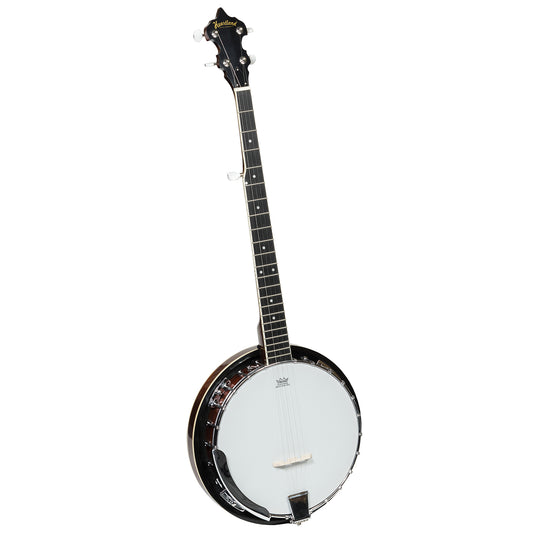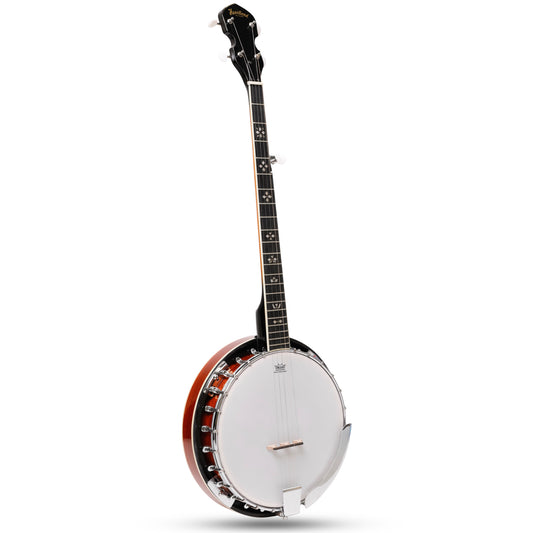There are many genres of music in the music world, which cater to people with diverse tastes in music. For specific genres of music, certain instruments are played. A banjo is usually preferred by music enthusiasts with a classic and traditional taste.
As a result of its evolution over time, this astonishing instrument can also now be played in a variety of genres. If you are passionate about listening to or playing banjo, you should know about banjo history and how it evolved into various types.
Based on the variety of types of banjo, it is an ideal instrument in terms of its versatility. In addition to their unique appearances, their sounds and techniques make them ideal for a wide variety of musical genres.
So, let's explore the evolution of banjo into its diverse types in this blog and discuss their unique qualities.
Banjo Evolution: A Brief History
In the music world, the banjo is renowned for its rich history and story of evolution. First introduced to American music by African slaves in the 17th century, the instrument carried on their musical tradition. Originally, it was made from animal skins and gourds, but its composition has evolved over time.
Later on, as new types of banjos with unique characteristics were introduced, the banjo family began to grow. With its captivating tunes and rhythm, it has become an integral part of folk, bluegrass, and traditional music genres.
Nevertheless, the banjo has become an iconic instrument in the world of music. Besides jazz, country, Irish, rock, newgrass, old time, and many others, it is also played in a variety of other genres. There is no doubt that the instrument has come a long way in the music industry and has earned its place in the hearts of musicians.
8 Different Types of Banjos - Each with its own Distinctive Sound
Through this blog, you will learn more about banjo types, regardless of whether you are new to the banjo world or an experienced banjo player. This blog describes eight of the most common banjo models, so you can decide which one is most suitable for your collection.
1. 4 String Tenor Banjo 17 Fret Short Scale

The 4 string banjo is one of the most popular types of banjos used in traditional Irish music and Jazz. As they have a short neck with 4 strings, they are easier to play. These banjos are lighter and sometimes louder as compared to other banjos.
Even though 4 string banjos are most commonly associated with folk and bluegrass genres, their versatility also makes them popular in other genres. They can be tuned to various tunings. The most popular traditional Irish tuning is GDAE.
2. 4 Irish Tenor Banjo 19 Fret

The Tenor Irish 4 String Banjo with 19 Frets is the most popular banjo.
Using a plectrum or finger picking, you can create great tunes when playing an Irish Tenor banjo. Due to its rhythmic nature, this traditional Irish instrument is ideal for traditional Irish musicians. The Irish tenor banjo is one of the easiest types of banjo to learn, which makes it a good choice for beginners and professionals.
3. 5 String Banjo

5 String Banjos are also known as Jazz & Bluegrass Banjos. There is no denying that their high-pitched, extraordinary sound, which begins at the 5th fret, will appeal to you. Banjos come in two types: resonator banjos and open back banjos.
The resonator model has a resonator attached at the back of the banjo, which produces a bright sound, while the open back model does not have a resonator attached, creating softer sounds. In terms of versatility, they are one of the most common type of banjo. They can be played in almost any musical genre, including folk, bluegrass, jazz, rock, country, and classical. They can be tuned in various tunings.
4. 6 String Banjo

6 String banjos are know as guitar banjos. These banjos can be tuned like a guitar. 6 String Banjos are also know as strumming Banjos for many styles. Various genres of music can be played on a six string banjo, including folk, country, classic, and traditional music.
5. Long Neck Banjo
The reason one of the banjo's types name is "long neck banjo" is that it has a longer neck as compared to the standard size. Its long neck makes it feasible to create different sounds through various techniques. It can create high-pitched sounds for clearer and more melodious music.
Also, it is mostly used to play folk and traditional music. If you are a solo performer or want to perform in an outside setting, a long neck banjo is the perfect choice for you.
6. Parlor Banjo
Like 6 string banjo, a parlor banjo is also a hybrid type, which combines the properties of a banjo and ukulele. Thus, it has other names like "banjolele" or banjo ukulele". Its name "Parlor" was set because it used to be played in small, parlor settings. It has a round body like a ukulele with a neck similar to a banjo. It is usually a part of folk, traditional, bluegrass, and jazz music.
7. 12 String Banjo
12 string banjo is another unique type of banjo, featuring twelve strings in pairs, each pair tuned to one pitch. This pairing of strings creates a rich sound, which can be heard clearly with a twang. Unlike 5 string or tenor banjo, 12 string banjo is not a popular banjo type. But it still breathes life into many genres, like folk, bluegrass, country and more.
8. Cello Banjo
Cello Banjo is a cross between a cello and a banjo. This iconic piece has a large resonating chamber and four strings that produce exceptional tone. Their versatility in playing techniques allows you to play it with fingertips, flat picks, or even bows. They are used in folk, bluegrass, Americana, and traditional jazz genres.








